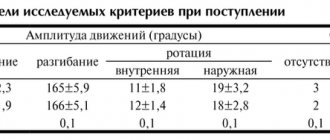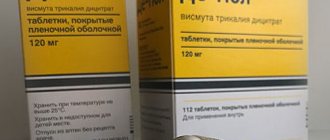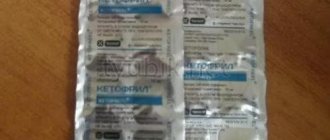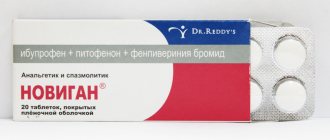Composition and release form
Mydocalm® Film-coated tablets - 1 tablet.
tolperisone (in the form of hydrochloride) - 50 mg - 150 mg excipients: citric acid monohydrate; colloidal silicone anhydrous; stearin; talc; MCC; corn starch; lactose monohydrate; titanium dioxide; macrogol 6000; hydroxypropyl methylcellulose 2910 in blister 10 pcs.; There are 3 blisters in a box. Mydocalm®-Richter Solution for injection - 1 amp. (1 ml) tolperisone (in the form of hydrochloride) - 100 mg lidocaine (in the form of hydrochloride) - 2.5 mg excipients: methylparaben; diethylene glycol monoethyl ether; water for injection in dark glass ampoules of 1 ml; There are 5 ampoules in a box.
Mydocalm
Mydocalm (active ingredient - tolperisone) is a central muscle relaxant (agents that promote muscle relaxation). The mechanism of action of this drug has not been fully understood, which does not prevent its successful use in such pathological conditions as increased tone and muscle spasms. It has a membrane-stabilizing and local analgesic effect, reduces the sensitivity to pain of peripheral nerves, prevents the transmission of impulses along afferent (sensitive) and motor neurons, which, in turn, blocks mono- and polysynaptic reflexes of the spinal cord. Another possible, but not completely established property of mydocalm is the ability to prevent the release of biologically active substances - mediators due to inhibition of the flow of calcium ions into presynaptic nerve endings. In the spinal trunk, mydocalm puts a barrier to the spread of excitation along the reticulospinal tract. Reduces the activity of a certain area of the brain responsible for muscle contractions - the caudal part of the reticular formation. This entire kaleidoscope of pharmacologically significant “technical and tactical characteristics” of mydocalm allows us to reduce pathologically high muscle tone, reduce their rigidity (rigidity, inelasticity) and susceptibility to spasms, facilitate functional motor activity, while dulling painful sensations.
The drug can also be prescribed to elderly patients; it is quite well tolerated, does not have a toxic effect on the cardiovascular system, does not have a sedative effect and does not impair mental performance and other higher brain functions.
Mydocalm is available in tablets and ampoules (in the latter case, the designation “Richter” is added to the name of the drug). The instructions for it strongly recommend using this drug strictly as prescribed by a doctor. Actually, it’s unlikely to work out any other way, because... Mydocalm is dispensed from pharmacies only with a doctor's prescription. The tablets should be taken after meals and washed down with a small amount of liquid, preferably water. The standard starting dose for adults and adolescents over 14 years of age is considered to be 50 mg, subject to 2-3 times daily dosing; subsequently, it is allowed to increase the dose of the drug to 150 mg with exactly the same frequency of dosing. For younger age categories, the dose is calculated depending on body weight: 2-4 mg per 1 kg with three daily doses (patients 7-14 years old) and 5 mg per 1 kg per day (patients 3-6 years old). When administering the drug by injection, a single dose is 1 ml of solution administered twice a day (intramuscularly) or once a day (intravenously).
Indications for use of Mydocalm
Mydocalm should be taken for spinal and cerebral palsy with increased tone, spasms, spinal automatism, for contractures of the limbs, for diseases with dystonia, rigidity, spasms, obliterating vascular diseases: obliterating atherosclerosis of the vessels of the extremities, diabetic angiopathy, thromboangiitis obliterans, Raynaud's syndrome, consequences of disorders vascular innervation (acrocyanosis, intermittent angioedema), postthrombotic disorders of lymph circulation and venous circulation, trophic ulcer of the leg, spastic paralysis, encephalopathy, a combination of hypertonicity with a violation of muscle tone of another type.
Pharmacological properties
Pharmacodynamics.
tolperisone is a centrally acting muscle relaxant. The mechanism of action of tolperisone is not fully understood. It has high affinity for nervous tissue, reaching highest concentrations in the brainstem, spinal cord and peripheral nervous system.
The most significant effect of tolperisone is its inhibitory effect on the spinal reflex pathway. It is likely that this effect, combined with the inhibitory effect on descending pathways, determines the therapeutic effect of tolperisone.
The chemical structure of tolperisone is similar to that of lidocaine. Like lidocaine, it has a membrane-stabilizing effect and reduces the electrical excitability of motor neurons and primary afferent fibers. Tolperisone dose-dependently inhibits the activity of voltage-gated sodium channels. Accordingly, the amplitude and frequency of the action potential decreases.
A proven inhibitory effect on voltage-gated calcium channels. This indicates that tolperisone not only has a membrane-stabilizing effect, but can also suppress the release of transmitters.
To top it all off, tolperisone has weak α-adrenergic receptor antagonist properties and has an antimuscarinic effect.
Clinical efficacy and safety. Tolperisone has been proven effective in treating muscle spasms after a stroke.
In a randomized, double-blind, placebo-controlled study of 120 patients with muscle spasm after stroke, treatment with tolperisone showed a highly significant reduction in Ashworth spasticity, the primary outcome measure. Tolperisone was superior to placebo according to physician and investigator overall efficacy ratings (p0.001). The mean improvement in the Ashworth score was 32% in the overall intention-to-treat (ITT) population and 42% in the subgroup of patients receiving tolperisone 300–450 mg/day. When assessing the performance of functional tests, the effectiveness of tolperisone was also higher than the effectiveness of placebo, but the differences were statistically insignificant.
In a randomized, double-blind comparative study involving 48 patients with brain damage, the efficacy of tolperisone according to the Barthel index was comparable to that of baclofen. However, tolperisone was superior to baclofen in improving the Rivermead Motor Assessment Scale (RMAS).
Data on the effectiveness of tolperisone for increased muscle tone in patients with musculoskeletal diseases other than muscle spasm after stroke are contradictory. Some studies have reported positive results on some tests, while other studies have found no benefit of tolperisone in these conditions.
The safety profile of tolperisone is based on data from clinical studies involving patients with increased muscle tone of various etiologies, as well as on data from spontaneous reports of adverse reactions.
Pharmacokinetics. After oral administration, tolperisone is well absorbed in the small intestine. Cmax in blood plasma is achieved 0.5–1.5 hours after administration. Due to the significantly pronounced first-pass metabolism, the bioavailability of tolperisone is about 20%. Fatty foods increase the bioavailability of the drug after oral administration by approximately 100%, and Cmax in blood plasma by approximately 45% compared to administration on an empty stomach. The time to reach Cmax increases by approximately 30 minutes.
Tolperisone is extensively metabolized by the liver and kidneys. The drug is almost completely excreted by the kidneys (99%) in the form of metabolites. The pharmacological activity of the metabolites is unknown.
T½ of tolperisone after intravenous administration is about 1.5 hours, after oral administration - about 2.5 hours.
Preclinical safety data. Based on data from preclinical studies studying pharmacological safety, repeated use toxicity, genotoxicity, and toxic effects on reproductive function, no specific risk for humans was noted.
Effects in preclinical studies were detected only when taken in doses significantly higher than the maximum permissible dose for humans, which indicates little relevance for clinical use.
In rats and rabbits, embryotoxic changes were detected upon oral administration of the drug in doses of 500 mg/kg body weight and 250 mg/kg body weight, respectively. However, these doses are many times higher than the recommended therapeutic doses for humans.
Note!
Description of the drug Mydocalm solution d/in. amp. 1ml No. 5 on this page is a simplified author’s version of the apteka911 website, created on the basis of the instructions for use.
Before purchasing or using the drug, you should consult your doctor and read the manufacturer's original instructions (attached to each package of the drug). Information about the drug is provided for informational purposes only and should not be used as a guide to self-medication. Only a doctor can decide to prescribe the drug, as well as determine the dose and methods of its use.
Side effects
The safety profile of tablets containing tolperisone is based on data from more than 12 thousand patients. in accordance with these data, the most common adverse reactions occurred were disorders of the skin and subcutaneous tissue, systemic disorders, disorders of the nervous and digestive systems.
According to post-marketing surveillance data, about 50–60% of cases of adverse reactions associated with taking tolperisone are hypersensitivity reactions. Most of these reactions were not serious and resolved on their own. Life-threatening hypersensitivity reactions have occurred in isolated cases.
Adverse reactions are listed by organ system class according to the MedDRA Medical Dictionary of Regulatory Activities using MedDRA frequency definitions: very common (≥1/10), common (≥1/100, 1/10) uncommon (≥1/1000, 1/100) , rare (≥1/10,000, 1/100), very rare (1/10,000), frequency unknown (cannot be estimated from available data).
| Classes of organ systems | Often (≥1/100, 1/10) | Uncommon (≥1/1000, 1/100) | Rarely (≥1/10,000, 1/100) | Very rare (1/10,000) |
| From the blood and lymphatic system | Anemia, lymphadenopathy | |||
| From the immune system | Hypersensitivity reactions, anaphylactic reactions | Anaphylactic shock | ||
| From the side of nutrition and metabolism | Anorexia | Polydipsia | ||
| Mental disorders | Insomnia, sleep disorders | Decreased activity, depression | Confusion | |
| From the nervous system | Headache, dizziness, drowsiness | Impaired attention, tremor, convulsions, hypoesthesia, paresthesia, lethargy (excessive drowsiness) | ||
| From the side of the organ of vision | Visual impairment | |||
| From the organ of hearing and balance | Tinnitus, vertigo (dizziness) | |||
| From the side of the heart | Angina, tachycardia, decreased blood pressure | Bradycardia | ||
| From the side of blood vessels | Arterial hypotension | Skin hyperemia | ||
| From the respiratory system, chest organs and mediastinum | Difficulty breathing, nosebleeds, shortness of breath | |||
| From the digestive system | Abdominal discomfort, diarrhea, dry oral mucosa, dyspepsia, nausea | Epigastric pain, constipation, flatulence, vomiting | ||
| From the liver and biliary tract | Mild liver damage | |||
| From the skin and subcutaneous tissue | Allergic dermatitis, hyperhidrosis, itching, urticaria, rash | |||
| From the musculoskeletal system and connective tissue | Muscle weakness, myalgia, pain in limbs | Feeling of discomfort in the limbs | Osteopenia | |
| From the kidneys and urinary tract | Enuresis, proteinuria | |||
| General disorders and complications at the site of treatment | Skin hyperemia at the injection site | Asthenia, discomfort, increased fatigue | Feelings of drunkenness, feeling of heat, irritability, thirst | Feeling of chest discomfort |
| Laboratory indicators | Decreased blood pressure, increased bilirubin concentration in the blood, changes in the activity of liver enzymes, decreased platelet count, leukocytosis | Increased creatinine concentration in the blood |
Frequency unknown (cannot be determined from available data) - changes at the injection site.
special instructions
The injection form of the drug is not prescribed to children!
Hypersensitivity reactions. In the post-marketing period, hypersensitivity reactions were most often observed with the use of tolperisone. Their severity varies from mild skin reactions to severe systemic reactions, including anaphylactic shock. Symptoms of hypersensitivity reactions may include erythema, rash, urticaria, pruritus, angioedema, tachycardia, hypotension, or shortness of breath.
Women with a history of hypersensitivity to other drugs or allergic conditions are at higher risk of hypersensitivity reactions when taking tolperisone.
Patients should be advised to closely monitor their condition to identify possible allergy symptoms. Patients should be advised that if allergy symptoms occur, stop taking tolperisone and seek immediate medical attention.
After an episode of hypersensitivity to tolperisone, the drug cannot be re-prescribed.
The drug in tablet form contains lactose monohydrate. If you are lactose intolerant, Lapp lactase deficiency or glucose-galactose malabsorption, you should not use this medicine.
The drug in the form of a solution contains lidocaine, therefore, in case of known hypersensitivity to lidocaine and other amide local anesthetics, Mydocalm for injection should not be used due to the possibility of developing cross-allergic reactions.
Use during pregnancy and lactation. According to animal studies, tolperisone does not have a teratogenic effect.
Due to the lack of significant clinical data on the use of this drug, Mydocalm should not be used during pregnancy.
Since it is unknown whether tolperisone passes into breast milk, the use of Mydocalm during breastfeeding is contraindicated.
Children. Mydocalm injection solution is not used in children. The safety and effectiveness of the drug in tablet form in children have not been studied.
The ability to influence reaction speed when driving vehicles and working with other mechanisms. Considering the possibility of developing symptoms such as dizziness, drowsiness, impaired attention, epilepsy, blurred vision, the drug should be used with caution when driving or operating other mechanisms.



